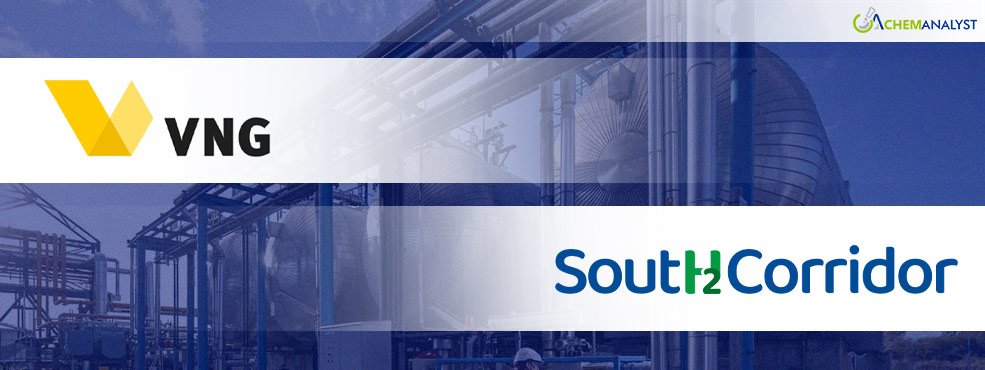European Giant VNG and European Partners Sign MoU to Import Hydrogen via the SoutH2 Corridor
- 17-Oct-2024 3:00 AM
- Journalist: Jacob Kutchne
Six European companies have collaborated to assess the feasibility of establishing a large-scale green hydrogen production facility. The consortium includes VNG (Germany), Sonatrech and Sonelgaz (Algeria), Snam and Sea Corridor (Italy), and Verbund (Austria). On October 14, the executives from these companies formalized their partnership by signing a Memorandum of Understanding (MoU) in Oran, Algeria. This green hydrogen production plant will be located in Algeria and will facilitate exports to the three European nations through the "SoutH2 corridor."
The MoU outlines a framework for collaboration, which includes conducting joint feasibility studies for the proposed plant. The participating companies are committed to evaluating the viability of large-scale green hydrogen production for export from North Africa via the SoutH2 Corridor.
Hans-Joachim Polk, Member of the Board of Management for Infrastructure and Technology at VNG, expressed his enthusiasm for this partnership. He stated, "After VNG signed a supply contract for Algerian pipeline gas earlier this year, we are thrilled to lay the groundwork for a comprehensive hydrogen partnership today. Algeria has significant potential in producing this future energy source and is, therefore, a crucial partner for us. Sourcing green hydrogen from Algeria will diversify our supply portfolio and significantly enhance our contribution to future security of supply with decarbonized gases. I am particularly pleased to be working on this project alongside our Algerian, Italian, and Austrian partners. International collaboration will be vital in developing the hydrogen economy in Germany and across Europe, as domestic production alone cannot meet the growing demand for hydrogen."
The SoutH2 Corridor Project aims to establish a dedicated hydrogen pipeline stretching 3,300 kilometers, with an anticipated completion date of 2030. Once operational, the corridor is expected to have an import capacity exceeding four million tonnes per annum (Mtpa). It will link North Africa to Italy, Austria, and Germany, facilitating the import of 10 Mt of renewable hydrogen to various demand centers across Europe. This initiative is one of five major pipelines planned for hydrogen imports, highlighting the increasing importance of international energy collaboration.
Transmission System Operators (TSOs) have submitted Project of Common Interest (PCI) applications under the EU Commission. The PCI includes the following individual candidates:
Italian H2 Backbone promoted by Snam Rete Gas
• H2 Readiness of the TAG pipeline system promoted by TAG GmbH
• H2 Backbone WAG + Penta-West promoted by Gas Connect Austria GmbH
• HyPipe Bavaria – The Hydrogen Hub promoted by Bayernets GmbH



